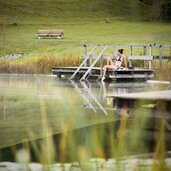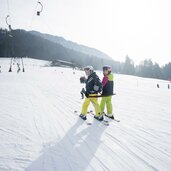Schwoich, located on a high plateau, extends from the Inn riverside to the Waller Mountain Hut at the foot of Mt. Wilder Kaiser
Image gallery: Schwoich
Altitude: 584 m asl
Schwoich is located on a high plateau, which extends from the Inn riverside to the Waller Mountain Hut, and from the Locherer Chapel to the Häring Waterfall. In other words, great parts of the municipal area consist of alpine pastures, meadows and forests. The name of the village points to a mossy underground, as this is also the reason why in this area plenty of blueberries grow.
Schwoich is considered to be the birthplace of the Austrian cement industry. Already 40 years before, James Parker had found cement in England, before Franz Kink extracted 1,400 kilos of cement without the use of trass or pozzolana in Schwoich. It was the year 1842. In this context, the Cement Museum is well worth visiting, an open air museum right at the beginning of the village, which exhibits two restored lime ovens. Equally interesting is the Locherer Chapel, established in order to remind the blocking of Kufstein in the War of the Spanish Succession (1701-1714).
In the past century, more precisely in 1998, the first biotope swimming lake of Tyrol was inaugurated in Schwoich. It is called Banana Lake, or Bananensee, referable to its form. In winter, the village is home-town of one of the best ice stock teams in Middle Europe as well as of numerous Olympic athletes in cross-country skiing, biathlon and luge. Four cross-country ski trails can be found in the surroundings - most of them are classified as medium difficult.





























